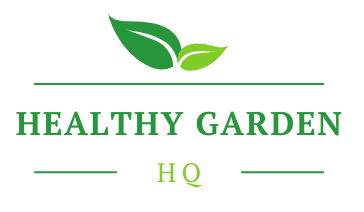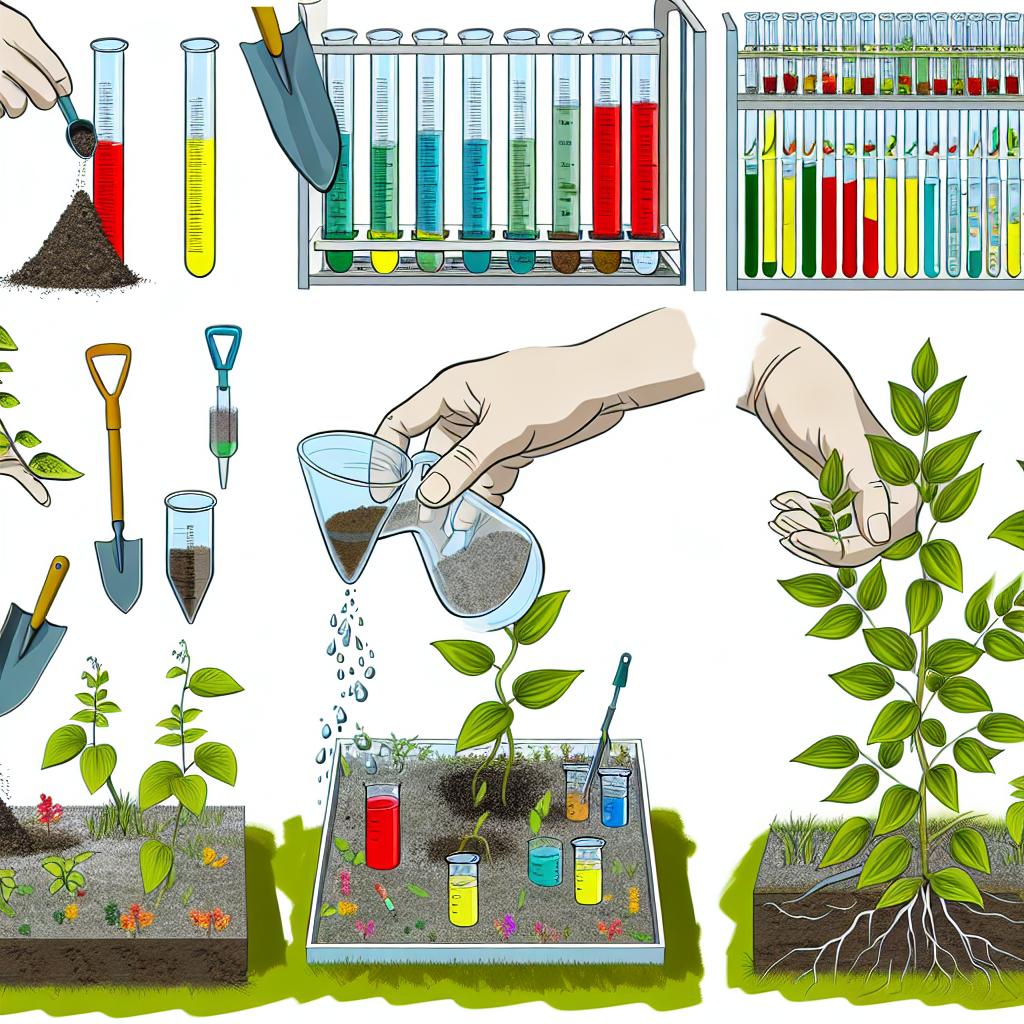Are your plants struggling to thrive despite your best efforts? It might be time to take a closer look at the soil they’re growing in. Understanding and adjusting soil nutrients is crucial for optimal plant growth, and in this article, we’ll show you how to test and adjust soil nutrients to give your plants the best possible chance at flourishing. Whether you’re a seasoned gardener or just starting out, this guide will help you unlock the secrets of healthy soil and vibrant, thriving plants.
Table of Contents
- Testing Soil Nutrients: A Step-by-Step Guide
- Understanding Soil pH Levels for Healthy Plant Growth
- Adjusting Soil Nutrients: Tips for Optimal Plant Health
- The Importance of Nitrogen, Phosphorus, and Potassium in Soil Health
- Measuring and Balancing Micronutrients for Thriving Plants
- Q&A
- To Conclude

Testing Soil Nutrients: A Step-by-Step Guide
Testing soil nutrients is an essential step in ensuring that your plants receive the necessary elements for healthy growth. By following a step-by-step guide, you can easily determine the nutrient levels in your soil and make any necessary adjustments for optimal plant growth.
To begin testing soil nutrients, you will need to gather the following materials:
– Soil testing kit
– Trowel or soil probe
– Distilled water
- Plastic containers
– pH testing strips
Once you have gathered your materials, follow these steps to test and adjust soil nutrients:
1. Collect soil samples from various areas of your garden or planting area.
2. Use the soil testing kit to analyze the nutrient levels in each sample, paying close attention to nitrogen, phosphorus, and potassium levels.
3. Use the pH testing strips to determine the acidity or alkalinity of the soil.
4. Based on the test results, make any necessary adjustments to the soil by adding fertilizers or soil amendments to balance the nutrient levels and pH.
By regularly testing and adjusting soil nutrients, you can ensure that your plants have the best possible growing conditions, leading to healthier and more vibrant foliage, flowers, and fruits.

Understanding Soil pH Levels for Healthy Plant Growth
Soil pH levels play a crucial role in the health and growth of plants. Understanding and managing soil pH is essential for ensuring optimal nutrient availability and uptake by plants. In this post, we will explore how to test and adjust soil nutrients to create the ideal conditions for healthy plant growth.
Testing Soil pH: The first step in understanding soil pH levels is to conduct a soil test. There are various methods for testing soil pH, including using pH testing kits or sending soil samples to a laboratory for analysis. Once you have determined the pH level of your soil, you can then take steps to adjust it as needed.
Adjusting Soil Nutrients: Depending on the results of your soil test, you may need to adjust the pH level to create a more favorable environment for your plants. This can be done through the addition of various amendments, such as lime to raise pH or sulfur to lower pH. It’s important to follow recommended application rates and guidelines to avoid overcorrection and potential harm to your plants.

Adjusting Soil Nutrients: Tips for Optimal Plant Health
Testing and adjusting soil nutrients is crucial for ensuring optimal plant growth and health. By understanding the nutrient levels in your soil, you can make the necessary adjustments to provide your plants with the essential elements they need to thrive. Here are some tips for testing and adjusting soil nutrients to promote optimal plant health:
Testing Soil Nutrients
To determine the nutrient levels in your soil, consider conducting a soil test. This can be done through a professional lab or using DIY soil testing kits. The test will provide valuable information about the pH levels and the presence of essential nutrients such as nitrogen, phosphorus, and potassium. By knowing the nutrient levels in your soil, you can make informed decisions about the adjustments needed to support your plants’ growth.
Adjusting Soil Nutrients
Once you have the results of your soil test, you can make the necessary adjustments to optimize the nutrient levels for your plants. Here are some ways to adjust soil nutrients:
- Adding organic matter such as compost or manure to improve soil structure and nutrient content.
- Applying fertilizers with the specific nutrients needed for your plants, based on the soil test results.
- Using cover crops to enhance soil fertility and nutrient levels.
By testing and adjusting soil nutrients, you can create an optimal growing environment for your plants, leading to healthier and more productive gardens.
The Importance of Nitrogen, Phosphorus, and Potassium in Soil Health
When it comes to soil health, the presence of essential nutrients such as nitrogen, phosphorus, and potassium is crucial for optimal plant growth. These three nutrients are commonly referred to as NPK and play a vital role in supporting the overall health and productivity of plants. Understanding the importance of these nutrients and how to test and adjust them in the soil is essential for any gardener or farmer.
Testing the levels of nitrogen, phosphorus, and potassium in the soil is the first step in ensuring that your plants have access to the nutrients they need for healthy growth. There are various methods for testing soil nutrients, including DIY test kits and professional laboratory testing. Once you have determined the nutrient levels in your soil, you can then make adjustments to ensure that your plants are receiving the optimal amount of NPK.
Adjusting soil nutrients can be done through the use of fertilizers, compost, and other organic amendments. By understanding the specific needs of your plants and the ideal levels of NPK for their growth, you can make targeted adjustments to your soil to promote healthy and robust plant growth.

Measuring and Balancing Micronutrients for Thriving Plants
Testing and adjusting soil nutrients is crucial for ensuring optimal plant growth and health. By measuring and balancing micronutrients, you can create an environment where your plants can thrive and reach their full potential. Here are some tips on how to test and adjust soil nutrients for optimal plant growth:
Testing Soil Nutrients
To determine the nutrient levels in your soil, you can use soil testing kits or send samples to a professional lab for analysis. Testing will help you identify any deficiencies or excesses in micronutrients such as iron, zinc, copper, manganese, and boron. Once you have the results, you can make informed decisions about how to adjust the nutrient levels in your soil.
Adjusting Soil Nutrients
After testing your soil, you may need to make adjustments to ensure that your plants have access to the right balance of micronutrients. This can be done through various methods, including:
- Adding organic matter such as compost or manure to improve soil structure and nutrient content.
– Applying specific micronutrient fertilizers to address deficiencies identified in the soil test.
– Adjusting the pH of the soil to optimize nutrient availability for plant uptake.
By regularly testing and adjusting soil nutrients, you can create an environment that supports healthy plant growth and ultimately leads to a more bountiful harvest.
Q&A
### How important is it to test and adjust soil nutrients for optimal plant growth?
Testing and adjusting soil nutrients is crucial for ensuring that plants have the necessary elements for healthy growth. Without proper nutrients, plants may struggle to develop, produce flowers or fruit, and resist diseases.
### What are the essential nutrients that plants need for optimal growth?
Plants require a variety of nutrients, including nitrogen, phosphorus, potassium, calcium, magnesium, and sulfur. These nutrients play essential roles in plant growth, from supporting photosynthesis to aiding in the development of strong roots and stems.
### How can I test my soil to determine its nutrient levels?
There are several methods for testing soil nutrient levels, including DIY test kits, sending samples to a professional lab, or using electronic soil testing devices. Each method has its advantages and can provide valuable insights into the nutrient composition of your soil.
### What are some common signs that my soil may be lacking in certain nutrients?
Plants can exhibit specific symptoms when they are lacking in certain nutrients. For example, yellowing leaves may indicate a nitrogen deficiency, while stunted growth could be a sign of phosphorus or potassium deficiency. By observing these symptoms, you can gain clues about which nutrients your soil may be lacking.
### How can I adjust my soil’s nutrient levels to promote optimal plant growth?
Once you have identified which nutrients your soil is lacking, you can take steps to adjust its levels. This may involve adding organic matter, using fertilizers, or making changes to your watering and mulching practices. By addressing nutrient deficiencies, you can create an environment that supports healthy plant growth.
### What are some best practices for maintaining optimal soil nutrient levels over time?
To maintain optimal soil nutrient levels, it’s important to regularly test your soil and make adjustments as needed. Additionally, practicing crop rotation, using cover crops, and avoiding over-fertilization can help to preserve and enhance the nutrient content of your soil over time.
To Conclude
We hope this article has provided you with valuable information on how to test and adjust soil nutrients for optimal plant growth. By understanding the importance of soil nutrients and how to properly assess and adjust them, you can ensure that your plants thrive and produce healthy yields. Remember to regularly test your soil and make necessary adjustments to provide the best growing conditions for your plants. With the right balance of nutrients, you can enjoy a bountiful and successful garden. Happy gardening!

